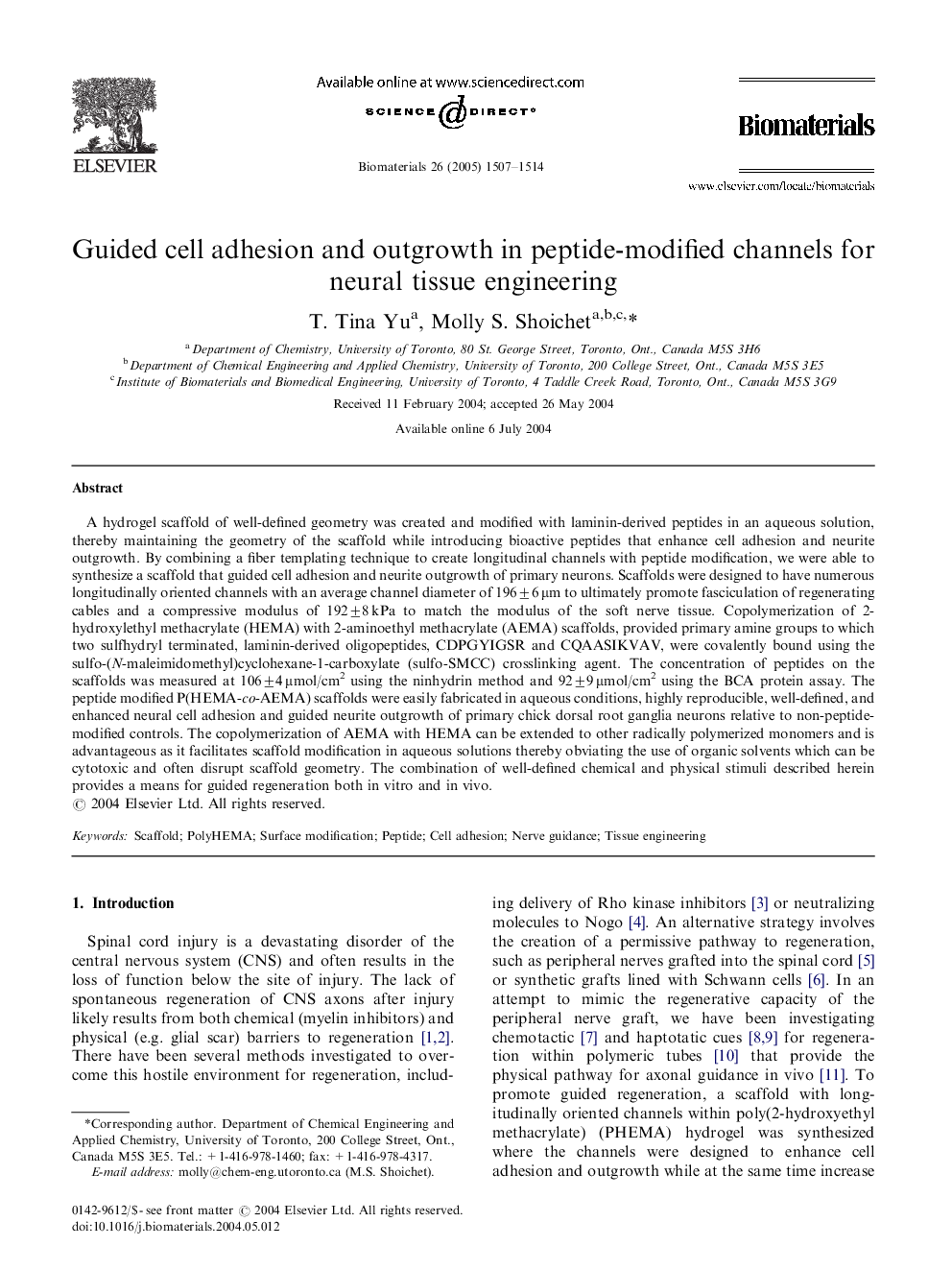| کد مقاله | کد نشریه | سال انتشار | مقاله انگلیسی | نسخه تمام متن |
|---|---|---|---|---|
| 10230202 | 774 | 2005 | 8 صفحه PDF | دانلود رایگان |
عنوان انگلیسی مقاله ISI
Guided cell adhesion and outgrowth in peptide-modified channels for neural tissue engineering
دانلود مقاله + سفارش ترجمه
دانلود مقاله ISI انگلیسی
رایگان برای ایرانیان
کلمات کلیدی
موضوعات مرتبط
مهندسی و علوم پایه
مهندسی شیمی
بیو مهندسی (مهندسی زیستی)
پیش نمایش صفحه اول مقاله

چکیده انگلیسی
A hydrogel scaffold of well-defined geometry was created and modified with laminin-derived peptides in an aqueous solution, thereby maintaining the geometry of the scaffold while introducing bioactive peptides that enhance cell adhesion and neurite outgrowth. By combining a fiber templating technique to create longitudinal channels with peptide modification, we were able to synthesize a scaffold that guided cell adhesion and neurite outgrowth of primary neurons. Scaffolds were designed to have numerous longitudinally oriented channels with an average channel diameter of 196±6 μm to ultimately promote fasciculation of regenerating cables and a compressive modulus of 192±8 kPa to match the modulus of the soft nerve tissue. Copolymerization of 2-hydroxylethyl methacrylate (HEMA) with 2-aminoethyl methacrylate (AEMA) scaffolds, provided primary amine groups to which two sulfhydryl terminated, laminin-derived oligopeptides, CDPGYIGSR and CQAASIKVAV, were covalently bound using the sulfo-(N-maleimidomethyl)cyclohexane-1-carboxylate (sulfo-SMCC) crosslinking agent. The concentration of peptides on the scaffolds was measured at 106±4 μmol/cm2 using the ninhydrin method and 92±9 μmol/cm2 using the BCA protein assay. The peptide modified P(HEMA-co-AEMA) scaffolds were easily fabricated in aqueous conditions, highly reproducible, well-defined, and enhanced neural cell adhesion and guided neurite outgrowth of primary chick dorsal root ganglia neurons relative to non-peptide-modified controls. The copolymerization of AEMA with HEMA can be extended to other radically polymerized monomers and is advantageous as it facilitates scaffold modification in aqueous solutions thereby obviating the use of organic solvents which can be cytotoxic and often disrupt scaffold geometry. The combination of well-defined chemical and physical stimuli described herein provides a means for guided regeneration both in vitro and in vivo.
ناشر
Database: Elsevier - ScienceDirect (ساینس دایرکت)
Journal: Biomaterials - Volume 26, Issue 13, May 2005, Pages 1507-1514
Journal: Biomaterials - Volume 26, Issue 13, May 2005, Pages 1507-1514
نویسندگان
T.Tina Yu, Molly S. Shoichet,